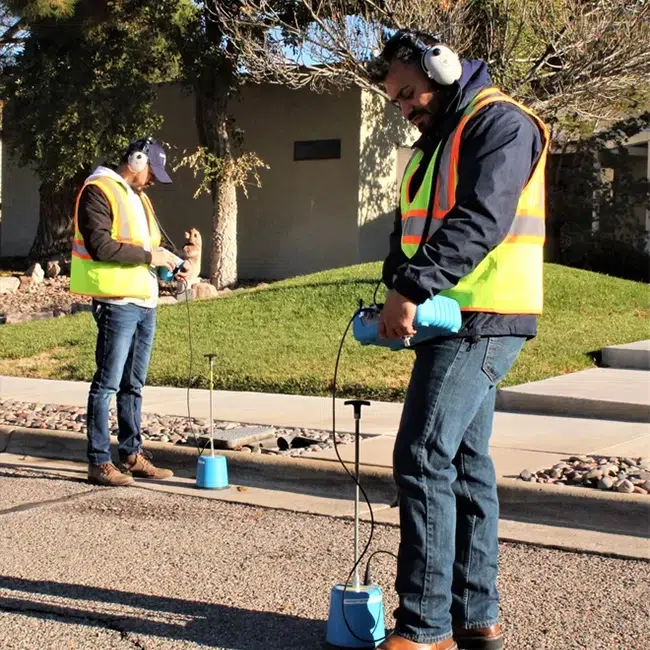Comprehensive Overview to Water Leak Detection for Home Owners and Businesses
Comprehensive Overview to Water Leak Detection for Home Owners and Businesses
Blog Article
Ingenious Solutions for Early Detection of Water Leaks in Structures and Framework
From sophisticated leak detection innovations to the release of IoT sensing units for real-time surveillance, the landscape of leakage avoidance is developing swiftly. Automated water circulation analysis systems are improving how leakages are identified and resolved, paving the means for a proactive technique to water leakage discovery.
Advanced Leak Detection Technologies
Advanced leak discovery innovations, geared up with advanced sensing units and algorithms, play an essential duty in quickly identifying and identifying water leaks in different settings. Electro-magnetic sensing units can determine changes in electro-magnetic areas triggered by water, supplying yet one more layer of leakage detection ability.

IoT Sensors for Real-Time Monitoring
In the world of modern-day water leak discovery, the combination of IoT sensing units for real-time tracking stands for a critical improvement in enhancing proactive leak discovery capacities. These sensing units supply continual monitoring of water systems, providing real-time information on water circulation prices, stress variations, and temperature changes. By leveraging IoT modern technology, these sensing units can identify also the smallest abnormalities in water usage patterns, enabling very early recognition of possible leakages before they escalate right into significant problems.
IoT sensing units transfer data to a central platform, where sophisticated formulas examine the info and produce alerts or notices when irregularities are discovered. This real-time surveillance capacity permits building proprietors or center supervisors to quickly deal with leakages, decreasing water damage, minimizing repair expenses, and conserving water sources.
Moreover, IoT sensing units can be integrated with building management systems, permitting automatic actions to identified leaks, such as shutting down water shutoffs or activating pumps to minimize the effect of leaks. In general, the application of IoT sensors for real-time tracking substantially boosts the effectiveness and effectiveness of water leak detection in buildings and facilities.
Artificial Intelligence Algorithms for Leakage Prediction

One trick benefit of making use of device understanding for leakage forecast is its ability to constantly find out and boost its precision over time. As even more data is gathered and fed into the algorithm, it can improve its predictions and adapt to altering problems, ultimately raising the reliability of leakage detection systems.
Furthermore, maker discovering algorithms can aid in identifying subtle signs of leaks that may go undetected by traditional tracking approaches. water leak detection. By assessing intricate information embed in real-time, these formulas can supply early cautions and signals, enabling timely treatment and preventive maintenance to minimize prospective water damages and associated expenses
Making Use Of Thermal Imaging for Leakage Detection
Thermal imaging innovation supplies an encouraging technique for detecting water leaks in different systems and frameworks. By making use of infrared radiation and temperature variations, thermal imaging electronic cameras can our website determine covert leakages that are not quickly visible to the naked eye. When water gets away from pipelines or frameworks, it often changes the temperature level of the bordering area, developing temperature differentials that thermal cams can record. These temperature abnormalities are after that translated right into noticeable photos, highlighting the specific location of the leakage.
Among the key benefits of thermal imaging for leak detection is its non-intrusive nature. Unlike conventional techniques that might need getting into wall surfaces or floors to situate leakages, thermal imaging allows for non-destructive screening. This not just saves time and lowers expenses however also lessens interruption to the structure or facilities being analyzed. Furthermore, thermal imaging can promptly scan large areas, giving an extensive overview of possible leak sources in a prompt way. Generally, making use of thermal imaging innovation boosts the efficiency and accuracy of water leakage discovery, making it a beneficial device for keeping the stability of structures and facilities.
Automated Water Circulation Analysis Systems
How can automatic water flow analysis systems transform the discovery and management of leaks in numerous systems and frameworks? Automated water flow analysis systems supply a proactive method to leakage discovery by continually keeping an eye on water flow rates and patterns. By developing baseline data, these systems can promptly identify inconsistencies that might show a leak, making it possible for prompt treatment to avoid considerable damage.
These systems make use of advanced algorithms to analyze real-time information and offer prompt notifies when anomalies are detected, enabling swift action to be taken. Additionally, automated water view flow evaluation systems can be integrated with building management systems or IoT platforms, click site improving overall effectiveness and making it possible for remote tracking capacities.
Moreover, the information gathered by these systems can be utilized for anticipating upkeep functions, aiding to identify potential weak points in the facilities before leakages take place. In general, the execution of automated water flow analysis systems can dramatically enhance leakage detection and monitoring techniques, eventually causing cost financial savings, decreased water wastage, and raised sustainability in structures and infrastructure.

Verdict
Finally, the assimilation of sophisticated leakage detection modern technologies, IoT sensing units, artificial intelligence formulas, thermal imaging, and automated water flow evaluation systems supplies ingenious solutions for very early detection of water leakages in buildings and infrastructure. These technologies allow real-time surveillance, prediction of leaks, and reliable discovery techniques to avoid water damages and waste. Applying these services can aid in maintaining the stability and sustainability of water systems in various settings.
Report this page